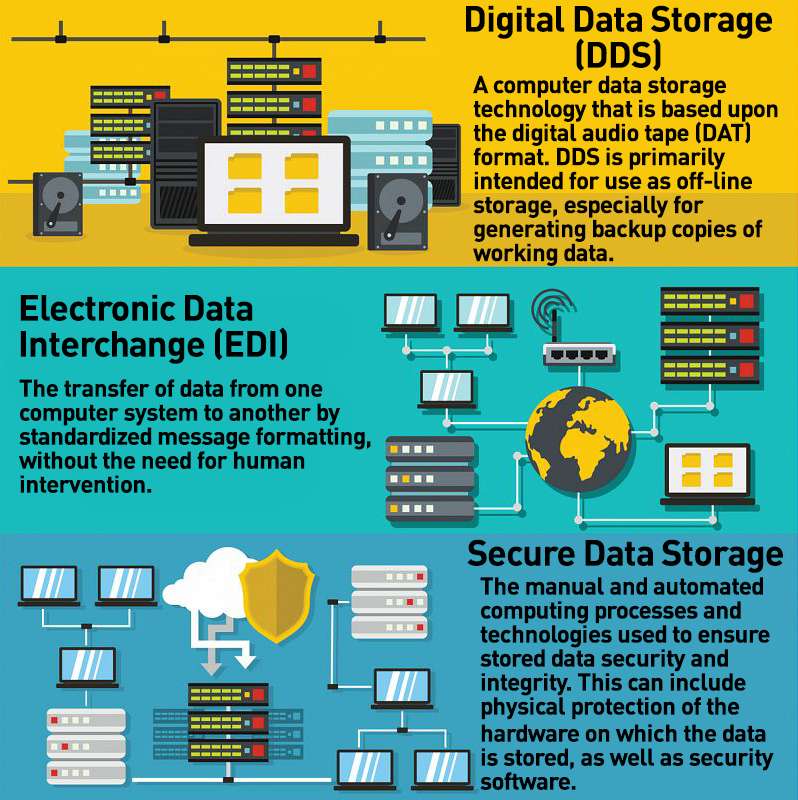Comprehending the Function of Data Destruction in Conditioning Cyber Security Defenses
Comprehending the Function of Data Destruction in Conditioning Cyber Security Defenses
Blog Article
Exploring the Significance of Information Damage in the Context of Computer System Safety And Security Services and Protecting Confidential Information
In an era where data violations are significantly typical, the relevance of effective information destruction can not be overemphasized. When no longer necessary, Organizations needs to adopt stringent procedures to make sure that delicate info is not just shielded during its lifecycle however additionally decisively removed. The techniques utilized for information removal, coupled with conformity to legal criteria, play a pivotal function in preserving confidentiality and count on. The implications of these practices prolong beyond mere compliance, affecting a company's online reputation and operational integrity in the digital marketplace. What approaches can companies implement to boost their data devastation protocols?
Recognizing Information Devastation
Data damage is a crucial element of computer system safety and security that involves the long-term elimination of information from storage devices to stop unauthorized gain access to and possible data breaches. In a progressively electronic landscape, companies face increased risks related to delicate details being poorly accessed or exploited. Efficient data devastation safeguards against these dangers, making certain that confidential dataâEUR" such as customer details, copyright, and monetary recordsâEUR" can not be recuperated after disposal.
Comprehending the significance of data damage expands beyond plain compliance with governing and lawful structures; it is essential for keeping business honesty and count on. When information is incorrectly managed or inadequately damaged, the effects can be extreme, consisting of economic loss, reputational damage, and legal liabilities.
Methods of Information Removal

One prevalent technique is data cleaning, which includes overwriting existing information with arbitrary patterns multiple times. This technique makes the initial data irretrievable, making it a prominent selection for companies seeking to safeguard secret information.
One more approach is degaussing, which utilizes an effective electromagnetic field to interrupt the magnetic domains on storage gadgets, efficiently eliminating the information. This method is especially efficient for magnetic media however is not suitable to solid-state drives.
Physical damage is one more robust approach, entailing the shredding or squashing of storage space tools. This approach assurances that information healing is essentially impossible, making it optimal for extremely sensitive details.
Finally, file encryption can serve as a complementary strategy to information elimination. By encrypting information prior to removal, companies can add an additional layer of safety and security, ensuring that also if remnants are recovered, they continue to be unattainable without the decryption key. Each approach ought to be picked based on the level of information sensitivity and the details safety requirements of the company.
Legal Compliance and Data Protection
Organizations need to navigate a complex landscape of lawful demands connected to information security, particularly after applying methods of information obliteration. Various guidelines, such as the General Data Defense Law (GDPR) and the Medical Insurance Portability and Accountability Act (HIPAA), enforce rigid standards on just how organizations need to handle and get rid of of sensitive data. Failing to follow these guidelines can bring about significant lawful consequences, consisting of substantial penalties and reputational damages.
Data damage procedures have to be thoroughly recorded to demonstrate compliance with suitable regulations and criteria. This documents not only works as proof of adherence to legal responsibilities yet additionally illustrates a dedication to protecting delicate details. Organizations needs to additionally establish clear policies pertaining to information retention and destruction timelines, ensuring that data is not held longer than required.

Moreover, regular audits and assessments of data damage practices are necessary to maintain compliance and adapt to progressing legal frameworks (data destruction). By proactively addressing lawful demands, organizations can mitigate threats related to data breaches and show their commitment to data protection. Eventually, focusing on lawful compliance in information damage processes is not simply a regulative obligation, but a basic element of a robust information safety strategy
Effect On Service Online Reputation
The online reputation of a service can be significantly influenced by its method to information damage and management. In today's digital landscape, where information breaches can take place anytime, the failure to properly dispose of delicate info can result in extreme repercussions. Organizations that improperly manage data devastation risk subjecting private client details, which not just violates privacy laws however additionally erodes depend on among clients and stakeholders.
A ruined credibility can cause decreased customer commitment, as customers become hesitant to involve with a service that has shown neglect in protecting their data. In addition, investigate this site adverse promotion bordering a data breach can have a lasting effect, as prospective customers may be deterred by the viewed lack of safety and security. This can lead to a straight decrease in profits and market share.
Moreover, businesses that prioritize data damage as component of their protection approach can boost their reputation by showcasing their commitment to safeguarding sensitive details. By taking on rigorous data administration methods, organizations can not only mitigate threats however also position themselves as reliable entities in their particular sectors, thereby enhancing their general brand name image.

Best Practices for Secure Disposal
Carrying out finest techniques for safe disposal of data is essential for minimizing dangers related to information violations and guaranteeing compliance with personal privacy policies. Organizations needs to take on an extensive information disposal plan that lays out procedures for both physical and digital information damage.
For physical information storage gadgets, such as hard disks, shredding or degaussing is recommended to stop data recuperation. Furthermore, companies ought to keep a chain of custodianship documentation throughout the disposal process, ensuring liability and traceability of disposed items.
For electronic information, using software application that sticks to market criteria for data wiping is crucial. This software application needs to overwrite existing information multiple times, making healing basically impossible. It is likewise vital to verify the performance of the information devastation process with audits or third-party evaluations.
Educating employees on safe disposal techniques adds one more layer of security, as human error can usually lead to data direct exposure. Frequently updating and reviewing disposal policies makes sure placement with advancing regulations and technological improvements. By applying these best practices, organizations can considerably minimize the threat of unapproved information accessibility and improve their overall data defense approach.
Verdict
In verdict, information damage is an essential element of computer system protection solutions that makes certain the security of private info from unauthorized navigate to this site access. Implementing effective browse around this web-site techniques of information eradication, adhering to lawful conformity, and acknowledging the effect on business online reputation are crucial elements of an extensive data safety approach. By embracing finest practices for safe and secure disposal, companies can promote trust with customers and secure sensitive information, eventually adding to an extra safe digital landscape.
In a period where data breaches are significantly typical, the significance of effective information destruction can not be overemphasized.Data devastation is an essential element of computer system safety that entails the permanent removal of data from storage space gadgets to stop unauthorized accessibility and prospective information breaches. Organizations must also develop clear policies relating to information retention and damage timelines, making certain that data is not held longer than essential.
By proactively dealing with lawful requirements, organizations can minimize threats associated with information violations and demonstrate their dedication to information safety and security (data destruction). Inevitably, focusing on lawful compliance in information devastation processes is not just a regulative commitment, however a basic element of a durable data safety approach
Report this page